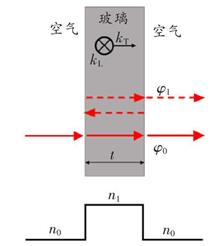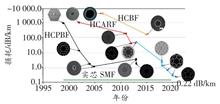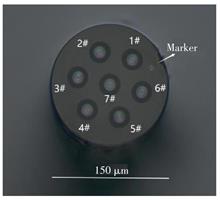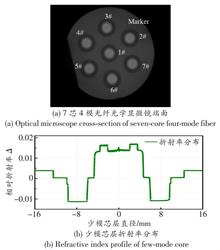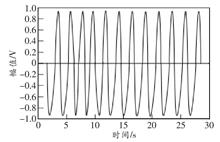
The scientific research of Hollow Core Anti Resonant Optical Fiber (HCARF) has made a great breakthrough progress, which is expected to break through some inherent limitations of traditional optical fibers. The HCARF guides the light beam in the air core, which has incomparable advantages in transmission and application compared with traditional optical fibers. Therefore, HCARF has become a hot research topic in the field of optical fiber communication area. In this paper, the light guiding mechanism of HCARF is introduced. The capacity advantage of hollow fiber in optical fiber communication system is analyzed. The development opportunities and challenges of HCARF are elaborated. It is beneficial to provide some reference value for the next generation of large capacity ultra-wideband long-distance transmission optical fiber in China.
Due to it is irreplaceable physical characteristics, Hollow core optical fiber has become a precious basic research topic for scientific research institutions. However, the industry has been keeping a wait-and-see attitude because of its overall performance and supporting applications are not mature. In recent years, with the continuous optimization of the loss performance, and the successful promotion of several industrial application cases, hollow core fiber has gradually been paid more attention by the industry side. In this paper, three types of hollow core fibers: hollow core bragg layered fiber, hollow core photonic bandgap fiber and hollow core antiresonant fiber, are reviewed. The paper is mainly focused on their optical principles and testing methods, and combined with the application of communication, laser power delivery and sensing fields to analyze the advantages of hollow core fiber. Finally, the future technology development trend of hollow core fiber is prospected.
Multi Core Fiber (MCF) is an important transmission medium of Space Division Multiplexing (SDM) technology, which can significantly enhance the communication capacity of existing optical fiber. However, MCF has the problems of high structural complexity, difficult to test, and no test standard for parameters. According to the structural characteristics, combined with the technical experience in the development, this paper standardize the splicing method and the parameters testing method of MCF, which lays the foundation for the large-scale commercialization of MCF in the future.
The Guided Acoustic Wave Brillouin Scattering (GAWBS) in fibers will be excited at a low optical power level, which can cause large impairments on high-capacity spatial division multiplexing optical fiber communication, digital coherent transmission and optical quantum transmission. For spatial division multiplexing optical fiber communication system, we theoretically and experimentally investigate the characteristics of GAWBS in the self-made uncoupled seven-core four-mode fiber. The results indicate that, the cores exhibit the significant differences of GAWBS characteristics depending on their distances from the fiber center. In future, the disparate GAWBS noise compensation method for each core can be utilized to achieve a high signal-to-noise ratio for spatial division multiplexing transmission with low error rate.
In the process of anti-interception of information, due to the weak control ability of data nodes, data is easily lost and information security is not high. An anti-interception method of optical fiber communication physical layer based on chaotic mapping is studied. The existence of the intercepted signal is determined by optical fiber signal detection and identification, and the ciphertext matrix is constructed based on the chaotic map encrypted image. The physical layer communication code is jointly transmitted to realize the information exchange between the receiver side and the transmitter side. We establish the anti-interception model of the communication physical layer to achieve the goal of anti-interception of the optical fiber communication physical layer. In the constructure of optical fiber communication network, a set of images with practical significance are selected as test samples. The proposed method and the traditional method are used for comparison. The experimental results show that the image data can be fully encrypted based on the proposed method. It has strong anti-interception performance, and the data information in the image can be retained in the image transmission, However, the traditional method loses 15 groups and 12 groups respectively, indicating that the proposed method has better performances.
In view of the problems in transmission capacity of illumination guidance system, this paper presents a high speed of 2.5 Gbit/s optical system based on gigabit transceiver. The system takes gigabit transceiver as the core device. It is used to achieve a series of processing with multiple data types and multiple interface in optical fiber transmission and Field Programmable Gate Array (FPGA). It ultimately achieves the high-speed optical fiber transmission of serial data. The results show that the system can increase the processing rate of the data from guidance array to ground console. It also reduces the number of equipment in illumination guidance system, which breaks through the limit of transmission distance between guidance array and ground console.
The strain sensitivity of bare fiber grating under the action of acoustic wave is too low, which is difficult to detect the effective reflection wavelength change. In this paper, the longitudinal sensing of fiber grating is used as a model, and a layer of thickness far exceeding the inner diameter of the fiber is coated around the grating. Low Young's modulus cylindrical coating is used to increase the strain sensitivity of the fiber grating. We also use the linear region of the reflection spectrum of the phase-shift grating as the edge of the edge filtering method to improve the sensitivity of laser detection. Transmission matrix method is then applied in the simulation to analysis the reflection spectrum of grating and reflectance curve of laser. The simulation results show that the strain sensitivity of the longitudinal sensing model of acoustic wave is better than that of the transverse sensing model. The coating layer with low Young's modulus can significantly improve the strain sensitivity of the grating. Under the action of acoustic wave with frequency lower than 1.7 kHz.The longitudinal sensing sensitivity of the fiber grating coated with polyurethane coating reaches 6.1 nm/MPa, which is 381 times higher than that of the bare fiber grating. Combined with the phase-shift grating reflection spectrum linear region, the comprehensive sensitivity is improved by 2 203.6 times, effectively improving the acoustic wave detection sensitivity of the grating.
Submarine optical fiber composite cables are widely used in cross-ocean information and energy interconnection projects play a key role in the national marine strategy. the environment condition is complex, different types of mechanical damage will directly affect the safety of the submarine cable. The finite element simulation analysis provides a low-cost and high-efficiency theoretical method for the safety monitoring through the simulation of different working conditions. In order to summarize the existing technology and evaluate the future development direction, this paper the finite element simulation analysis of submarine cables under tensile, torsion and bending load summarize the research results of submarine cable mechanical damage from anchor and natural ocean current, which can provide reference for monitoring technology such as optical fiber sensing. Finally, the simulation technology is summarized and prospected.
High speed directly modulated semiconductor laser offers high speed transmission rate with high reliability and low cost, making it a cost-effective light source choice for 5th Generation Mobile Communication Technology (5G) fronthaul and data center applications.There have been many researches on the performance improvement of high-speed directly modulated semiconductor lasers.This paper reviews the development of high-speed semiconductor lasers from the aspects of uncooled wide-temperature operation research and ultra-high-speed bandwidth improvement.We also briefly introduce our work in this area.
Due to the lack of domestic 980 nm pump laser design experience and production process, the key technology of high power 980 nm pumped laser to break through. In this paper, a 980 nm pump laser with 400 mW output power has been successfully developed by using a domestic solution, including the design and implementation of chips, gratings and coupling fibers. By using the all metallized package directly coupled with wedge-shaped fiber and selecting the double grating structure for wavelength locking, the wavelength stability of the 980 nm pumped laser with 400 mW output power in the operating temperature range of -50~75 ℃ can reach 0.01 nm/ ℃. Moreover the 980 nm pump laser has passed the 800 mA charge aging at 75 ℃ for more than 5 000 h. This has laid a foundation for the research of domestic pump lasers with high reliability.
In order to solve the problem of response speed and improve the far-field divergence angle characteristics of the traditional Selective Area Growth-Duble Stack Active Laser-Electro-absorption Modulated Laser (SAG-DSAL-EML) in a high-frequency modulation environment, this paper uses the iron-doped buried technology to the Elector-absorption Modulated Laser (EML) structure was optimized, and the SAG-DSAL-EML with a 1 310 nm iron-doped buried structure of InGaAsP/InP material designed and a sample chip fabricated. The active area of the new SAG-DSAL-EML a mesa structure, and the two layers of the SAG-DSAL-EML epitaxially grown InP layer. At the same time, the laser part and modulator part of the designed iron-doped buried structure EML are numerically and simulated by Advanced Laser Diode Simulator (ALDS), and High Frequency Structure Simulator (HFSS). The results show that compared with the traditional multiple quantum well structure, the threshold current of the SAG-DSAL structure laser is reduced by 13% ompared with the traditional ridge waveguide structure, the lateral confinement capability of the iron-doped buried structure is improved by 52%. The difference is reduced by 40% and has a smaller far-field divergence angle ompared with the traditional PNPN buried structure, the response bandwidth of the modulator with the iron-doped buried structure at -3 dB is increased by about 24%. The sample chip is tested, and the test shows that the threshold current of the laser is 14.5 mA, the Side-Mode Suppression Ratio(SMSR) is 45.64 dB response bandwidth of the electro-absorption modulator -3 dB is 43 GHz under the injection current of 70 mA, which meets the basic requirements of high-speed laser communication.







